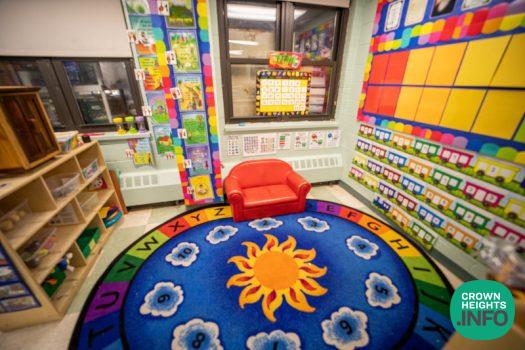
“Wait… I’m Not Ready Yet!” – Helping Children Who Struggle With Transitions
by Chana Kaiman, LCSW-RPT. Education & School Relations Lead at the Bereishis Foundation
Dani is seven years old, bright-eyed, imaginative, and endlessly curious. But every morning, when it’s time to leave for school, his body stiffens. His backpack sits by the door like a quiet reminder, but he hovers near the Lego table, shoulders tight, breath shallow.
“I’m not ready yet,” he whispers – not with words, but with his entire body.
If you’ve raised or taught a child like Dani, you know that transitions can feel like battles. But beneath the meltdowns, delays, shut-downs, and protests lies a deeper truth:
Some children experience shifts from one activity to another not as simple moments, but as emotional earthquakes.
Understanding their world through the child’s eyes changes everything.
What a Transition Feels Like to a Child
Adults glide through transitions. In a fleeting moment we can finish the email, grab the keys, head out. But children live in the present moment with their whole being. When they’re playing, building, drawing, imagining; they’re not just doing an activity. They’re inhabiting a world.
A sudden “Time to stop!” can feel like a jolt:
Where am I going? Will I like it? Why do I have to leave? Will I lose what I care about?
A child once told me, “My brain gets stuck and I can’t move it.” That sentence captures exactly what somatic and neurodevelopmental science teaches: the body doesn’t switch states on command.
Some children simply need more time and connection to “move their insides” from one state to another.
The Body Speaks First: A Somatic View
Children who struggle with transitions often feel the shift in their bodies before they feel it in their minds. Their breathing may quicken, muscles tense, and their nervous system begins scanning for danger, even though nothing is wrong.
Research explains that the nervous system must feel safe before it can shift gears. A transition, even a small one, can momentarily remove that sense of safety.
So when a child refuses to put on shoes or bursts into tears when asked to clean up, it isn’t “defiance.”
It’s biology.
What the Brain Needs to Transition: A Neurosequential Approach
Dr. Bruce Perry’s Neurosequential Model reminds us that the brain changes states from the bottom up. Children must first be regulated, then connected, and only then can they process words, logic, or instructions.
Meaning:
If a child is overwhelmed in the nervous system, saying “Let’s go, we’re late!” cannot land.
Transitions become smoother only when the adult offers regulation first. What does that look like in motion? Slowing down, connecting, matching the child’s energy, warming up their system.
Belonging and Agency:
All child behavior, even inactivity like when they don’t budge when it’s time to go has a message. Children want to belong, to matter, to feel that their voice counts. Transitions often threaten that sense of significance:
– “You’re taking me away from something important to me.”
– “I had no say.”
– “You’re not seeing how hard this is.”
When adults rush or over-control transitions, children escalate, not because they want power, but because they want partnership.
When adults offer choices, notice effort, and acknowledge feelings, children come forward willingly.
Listening, slowing down giving choices isn’t a losing adult; it is empowering the child.
A Torah Perspective: Honor the Journey, Not Just the Task
In Torah and Chassidus, growth is understood as a process – hishtalshlus – a progression from one level to the next through gentle unfolding, not abrupt leaps. Even spiritual transitions happen step by step.
Children, with their tender worlds, deserve that same gentleness.
Kavod habrios, honoring the dignity of each human being, applies profoundly to children in vulnerable moments. When we rush a child or dismiss their struggle, we chip away at that dignity. When we slow down, guide, and honor their process, we reflect the Torah’s value of nurturing each neshamah according to their path.
Supporting transitions is not just behavior management; it is chinuch, teaching resilience, self-regulation, and trust.
So How Do We Help? Practical Tools Woven Into Real Life
Supporting a child through transitions isn’t about finding the perfect script. It’s about understanding what their body, brain, and heart need at the very moment when their world suddenly feels unstable. When adults show up with presence instead of pressure, the child begins to trust the process and they learn how to feel secure themselves.
Here are expanded, in-depth tools that truly shift the experience:
1. Slow the Moment: Regulate Before You Navigate
Children borrow their regulation from us, adults.
When adults rush, bark orders, or tighten their tone, the child’s nervous system interprets the transition as threat.
Instead, intentionally lower your energy:
– Drop your voice to a warm, calm tone.
– Match your child’s pace for a few seconds before inviting a shift.
Reflect their emotion:
“It’s hard to stop when you’re in the middle of something important.”
A regulated adult becomes the child’s on-ramp to the next moment.
2. Warm Up the Body: Use Sensory Tools That Help Shift States
The body must transition before the behavior can. Gentle sensory inputs help a child “change channels” internally:
Try:
– Slow hand squeezes
– Deep pressure (like a grounding hug or firm hand on the back)
– Rocking or walking in rhythm
– A short stretch, shake-out, or wiggle
– Soft humming
These sensory tools calm the lower brain, making transitions possible—not forced.
3. Use Predictability: Give the Brain a Map
Children can handle almost anything as long as they know what’s coming next. Uncertainty is what overwhelms.
Create predictability through:
Short scripts:
“First we clean up, then bathroom, then we get dressed.”
Visual supports:
– Pictures
– A small written list
– A “next–then–later” card
Consistent phrasing:
If the adult uses the same transition language daily, the child develops neurological rehearsal. Their brain begins shifting earlier because it knows what to expect.
Predictability equals safety.
4. Micro-Transitions: Break the Shift Into Bite-Sized Steps
A large transition is like a tall staircase. A child who struggles needs smaller steps.
Instead of:
“Get ready for bed!”
Try:
“Let’s walk to the hallway together.”
“Now pick which pajamas.”
“Now turn the bathroom light on.”
Each step reduces overwhelm and preserves mastery.
Adults often assume children resist because they don’t want to transition. Often, it’s because the transition is too cognitively or emotionally big. Micro-steps shrink it into something achievable.
5. Offer Agency: The Key to Cooperation
When children feel powerless, they protest.
When they feel included, they participate.
Offering agency doesn’t mean negotiation – it means involvement.
Examples of agency-rich choices:
– “Do you want two minutes or three before we switch?”
– “Should I carry your backpack, or do you want to?”
– “Do we hop or march to the door?”
– “Should we clean up the blocks first or the crayons?”
Agency fulfills the child’s need for significance and belonging, core drivers of behavior.
6. Protect Their World: Ritualize the “Goodbye” to What They’re Leaving
Transitions are hard because something meaningful is ending.
When adults honor that, the child feels seen.
Try rituals like:
– Taking a picture of their creation
– Covering the toy with a cloth “for later”
– Saving a piece in a “continuation box”
– Saying, “Let’s tell your Legos: ‘See you after school!’”
Rituals mark endings gently, preserving the child’s internal story rather than abruptly cutting it off.
7. Narrate What’s Happening: Give Words to the Experience
Children feel safer when adults narrate transitions using warm, confident language:
“I’m going to help your body switch from play-mode to school-mode.”
“We’re doing this together.”
“Your feelings make sense. I’ll walk with you to the next step.”
Narration creates cognitive scaffolding and eventually the child uses your words later on their own.
8. Stay Regulated Yourself: You Are the Barometer
The child’s nervous system syncs to yours.
If you’re stressed, rushed, or reactive, their internal storm intensifies.
Before initiating a transition, try:
– One slow exhale
– Softening your shoulders
– Speaking half as fast
– Reminding yourself: He’s not giving me a hard time – he’s having a hard time.
Your calm makes their transition possible.
9. Practice Transitions During Calm Times: Build the Skill, Not Just the Moment
Children improve transitions not during meltdowns, but during play.
Play-based practice helps the brain rehearse the sequences:
– Pretend play: switching scenes or roles
– Freeze dance and “Go/Stop” games
– Puppet shows (puppet won’t leave – child has to help)
– Practicing morning routines when there’s no rush
Rehearsal wires the brain for future success.
10. Celebrate the Small Wins: Reinforce Resilience
A child who struggles with transitions needs their effort noticed.
Instead of:
“Finally, you’re ready.”
Try:
“You moved from one thing to the next. That took courage.”
“You paused your game even though you didn’t want to. That shows strength.”
“You’re learning how to switch gears. I’m proud of you.”
Praise that reflects effort, not performance, builds identity.
About the Author
Chana Kaiman, LCSW-RPT, is a Licensed Clinical Social Worker and Registered Play Therapist specializing in child, adolescent, and family therapy. Chana has advanced training in Child Centered Play, Filial Family Play, Adlerian play therapy, trauma-informed care, and neuroscience-based interventions, integrating evidenced-based practice with a deeply Torah-rooted approach to emotional wellness.
Chana is the Clinical Director of her private practice, where she supports children struggling with anxiety, learning challenges, behavioral concerns, trauma, and low self-concept. She is known for creating a warm, relational space in which safety, curiosity, play, and connection open the doors to healing.
In addition to clinical work, Chana provides professional consultation, parent education, and community workshops that weave together contemporary mental health practice with Chassidus- based perspectives on the inner world of the child.
Chana resides in New York and can be contacted via email at ChanaKaiman@gmail.com or by phone at 740-673-0440.












